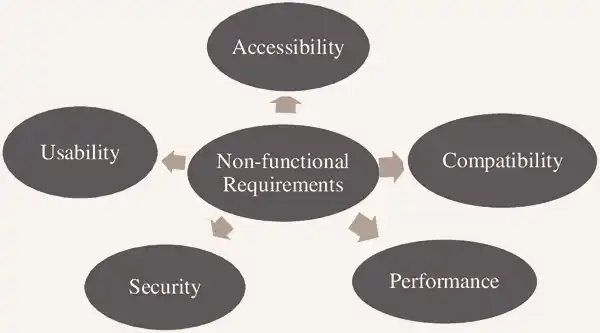Key Takeaways
- Examining both requirements is significant for the success of the final result.
- Functional requirements are basically about the behavior of the software system.
- Non-functional are non-behavioral requirements such as scalability etc.
- Distinguishing between the two is important o ensure that the provider and the client work towards the same goal.
Analyzing the requirements is pertinent to ensure the success of a system or software. Their differentiation helps both the clients and the provider to work toward the same goals. This also helps in reducing the financial risk associated with it and submitting the project on time.
In this article, we explore why it is so important in defining a software system’s behavior and functionality.
In software development, it’s vital to define its behavior and functionality. This is where functional requirements come in. They outline the tasks and actions that the program needs to perform. They act like a blueprint for developers and stakeholders, making sure everyone is on the same page about what the application should do.
They are generally of two types:
- Functional
- Non-Functional
They are influential in software development. But not all of them are the same. Functional requirements specify what the program should do, while nonfunctional describe how it should perform. The difference between these types is often overlooked and can cause confusion and project failures.
Let’s take a look at these two in brief, before knowing why it is pivotal to keep those two side by side.
Functional Requirements

They’re usually based on user needs and business objectives. They lay out the functions, operations, and tasks that the software system needs to be capable of doing. Functional requirements can cover features like user authentication, data manipulation, calculations, reporting, and even integration with other systems.
These are the product features that the developers should mention to allow the clients to fulfill their tasks. All the necessary functions must be implemented into the system. In layman’s terms, these are the behaviors of a system. This includes audit tracking, certification requirements, etc.
There are several ways in which these can be written, but the most common is in the text format. Other options are prototypes, user stories, diagrams, and many more. Unlike non-functional ones, they are visible in the final product to the user. The one big contrasting feature is that it is specified by the user.
They define the behavior of a software system. They tell the system how to respond to certain inputs or events. Take an e-commerce site, for instance. One condition could be that when a user adds an item to the cart and goes to checkout, the system should calculate the cost, give discounts, and ask for payment info.
This provision sets the expectations for checkout. They also determine a software system’s functionality. They list the features and abilities it should have. Let’s think about project management software.
Functional requirements might include creating and assigning tasks, tracking progress, making reports, and promoting communication among team members. These ensure the application has the right tools for successful project management.
For example- A verification mail is sent to the first-time user when they register on any software.
Non-Functional Requirements

Compared to the functional ones, they are not related to the system’s functional aspect. Also called non-behavioral requirements, they can be defined as the constraints that the system must qualify as per the project contract. They are further divided into two categories:
- Execution qualities – This consists of security and usability.
- Evolution qualities – Extensibility, scalability, maintainability, and testability come under this category, which forms the structure of the software system.
These are specified by the technical team like architects, software developers, etc.
For example-The time period of when the mail should be sent is decided by this. Take, for instance, that an email should be sent within 12 hours and not more than that after registration.
Why it is Important to Differentiate Between the Two?

When we look at developing software for designing a system, understanding the difference between functional and non-functional requirements is significant.
By creating a contrast between these two types of requirements, development teams can effectively prioritize and allocate resources to meet both functional and non-functional aspects of the system.
This guarantees that the application not only fulfills the users’ behavioral expectations but also provides them with a top-notch experience in terms of performance, usability, and other nonfunctional attributes. Functional requirements help in comprehending the functions of the system, while the other one helps in understanding the performance of the system.
To summarize, the significance of distinguishing between them lies in ensuring the development of a program that not only satisfies the desired functionalities but also delivers an outstanding user experience concerning performance, usability, security, and other crucial aspects.
What matters is the high-quality end product as requested by the clients. Giving proper attention to both types of requirements, development teams ensure that they create software solutions that surpass user needs and expectations.







